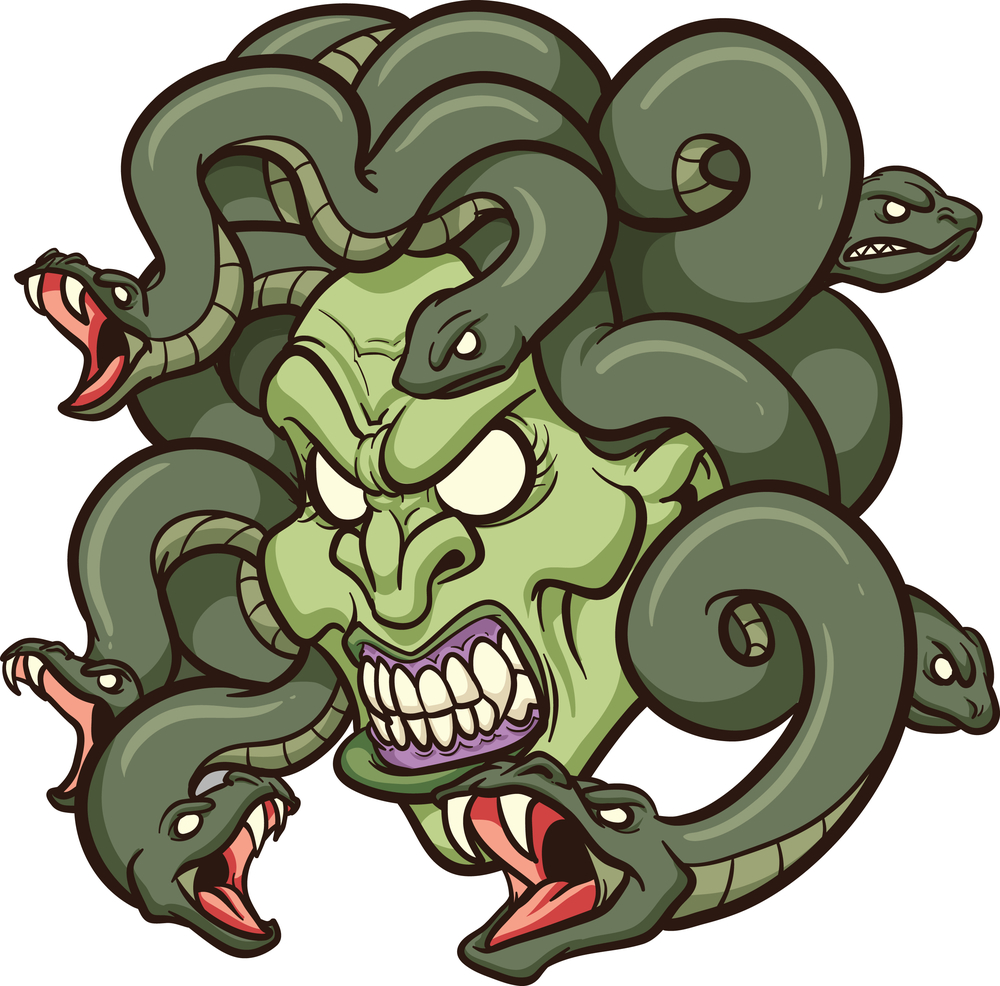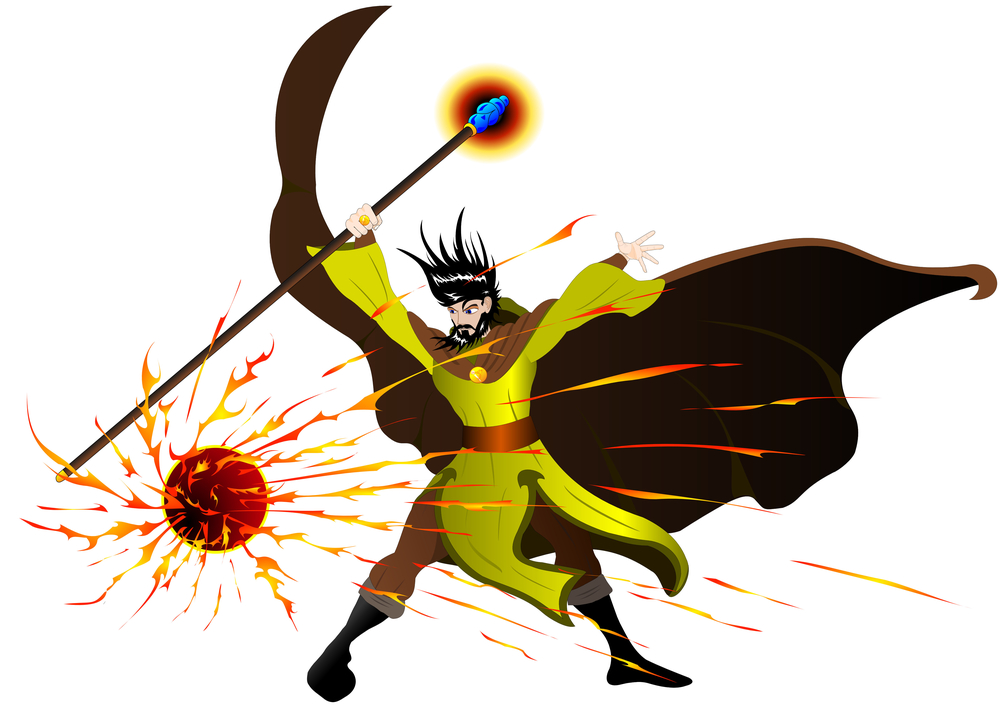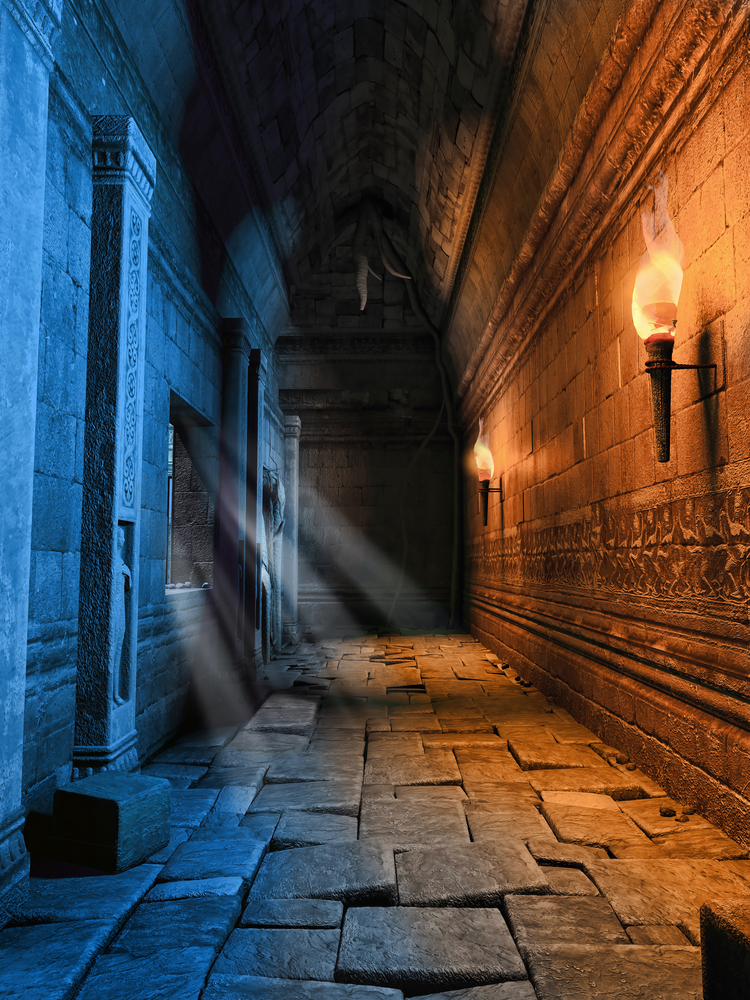Illusions are your friends. As as a dungeon master Illusions give you the opportunity to do many things with your players just to torment them. And tormenting them is the point….isn’t it? At least it is for me…..
Simply killing the adventurers is certainly fun and enjoyable. After all…they are trespassing in my home. But it is far more enjoyable to make them believe that they have a chance to survive and then snatch it away from them at the last second.

So. On to Illusions. Let’s talk about three of my favorites. There are so many options it would be nearly impossible to discuss all of them. So let’s focus on three.
The Illusion of a Floor
This is one of my all time favorites. The delvers are walking down the hallway or into a large chamber and suddenly discover that the solid stone floor that they were walking on is not really there at all. Now, obviously some of the adventurers may disbelieve this illusion of a floor in time to save themselves. So much the better.
For when they do disbelieve this illusion they will separate themselves from the rest of the party which will just have fallen into a pit of nasties waiting for them. Hungry wolves are nice. Level draining wraiths….however….are even better….
With the adventurer party split (by their own choice) they will be substantially weakened. And then the fun begins. But not before they each take falling damage from landing in the pit or room below the nonexistent floor.
The Illusion of a wall
Sometimes it is fun to let the adventurers walk into an area where they think that they are totally safe. A room with normal looking walls or a mirror or something will probably not concern them too much. But if you give them a reason to disbelieve that the wall or mirror is present….say by letting them put a hand through it while searching for secret rooms……they will choose to disbelieve that the wall is real. And then the fun begins….. For behind that illusionary wall is this lovely lady.

And it is going to be hard to convince the dungeon master that the adventurer was not looking at her. Yes. It is a mean thing to do. But then again. I am an evil Lich.
The Illusion of Magic Being Used Against Them
Ok. I am going to make an admission to you. Some of my minions are just not all that. Some of them are…..well….mindless. You know? So in order to boost their effectiveness in guarding my tombs and dungeons I tend to compensate for their inadequacies through the use of magic. Illusions can work wonders for improving the power of such weaklings. For example say the adventurers wander into a room guarded by a zombie. But he does not look like a mere zombie. He looks like a powerful Lich like me! And he begins casting a spell. A fireball!
If the adventurers do not disbelieve this illusion then the effects of the spell will cause them to believe that they have been damaged. Some of the adventurers may fall to the floor believing themselves dead. The zombie (and any other zombies nearby) can then deal with the other adventurers without the aid of those believing themselves injured or dead. It’s a win win situation right?

In conclusion
There are so many things you can do with illusions in this game. Yet the illusionist is one of the least chosen classes by adventuring types. But as the dungeon master there is no reason for you not to use them to your own advantage. I will be talking more on this subject in later articles. For now…go slay some delvers for me will you?



Im curious how the mechanics of illusionary spellcasting work in 5e. Care to illustrate?
Honestly I play more 1st edition than 5E. But many of the illusionist spells from 1st edition still exist in 5E. Phantasmal force, hypnotic pattern, prismatic spray, etc all came from 1st edition. In 5th edition a wizard has the option of joining one of several schools of magic. Specifically the school of illusion is listed on page 118 of the Player’s Handbook. With this school of magic selected the player gains certain benefits towards using those types of spells. As for the Dungeon Master’s use of illusions I would imagine it would work much the same as it did in 1st Edition. A player encounters something in the course of the adventure. He can accept what he sees. Or if he suspects that something is not correct then he could suggest to the DM that he wishes to disbelieve. In 5E that would involve a skill check of some kind. Investigation or perception would be likely choices. To be perfectly honest I am not sure that I have personally seen how a 5E DM handles this so I am guessing that this would be the procedure. If I was running a 5E game that is how I would handle it (unless I had seen it handled in some better way). In 1st edition the player would then make a saving throw to see if he succeeded in disbelieving the illusion. If he fails the saving throw then he is going to be affected by the illusion (take monster or spell damage or whatever).